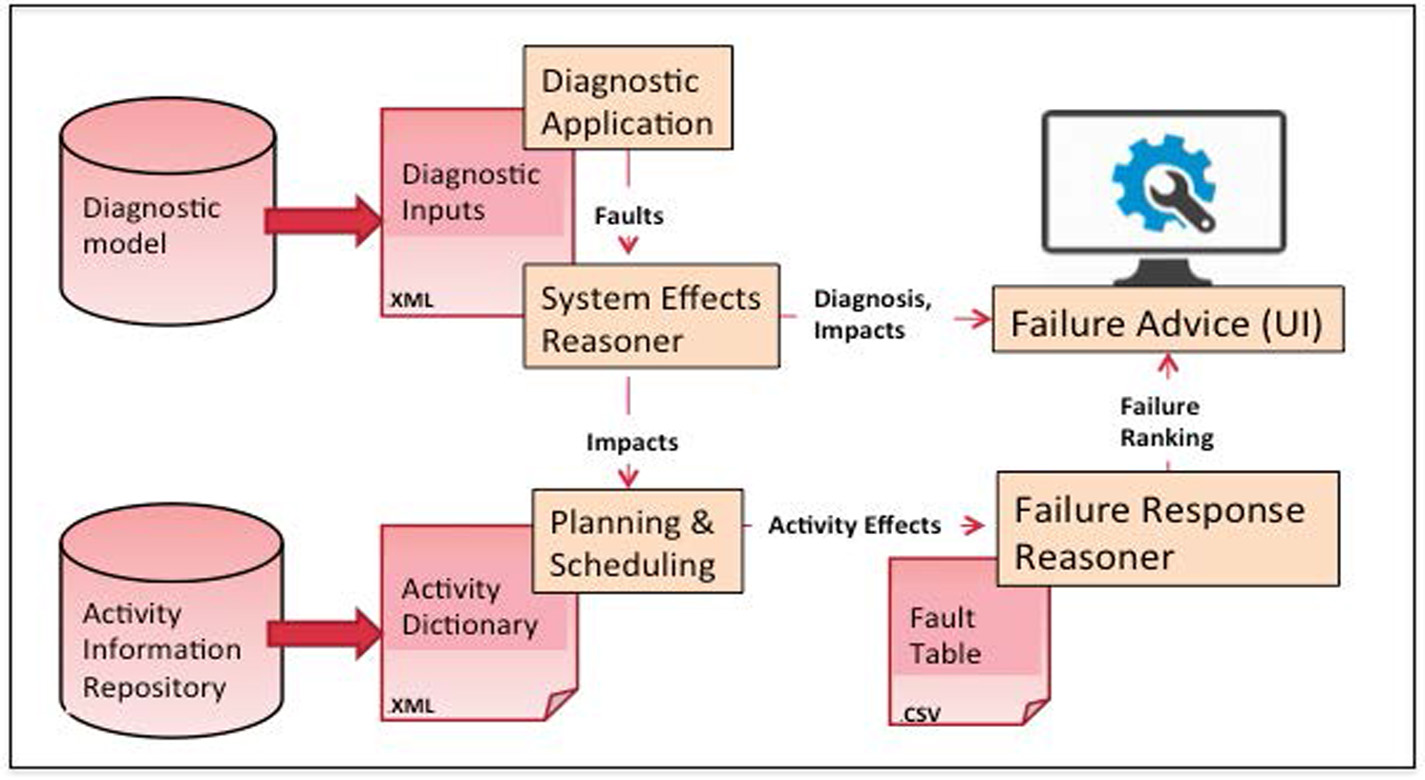A System for Failure Response Advice Based on Diagnosed Failures and Their Effect on Planned Activities
information technology and software
A System for Failure Response Advice Based on Diagnosed Failures and Their Effect on Planned Activities (TOP2-269)
Patent Only, No Software Available For License.
Overview
This invention is a software system and algorithm that integrates with the modules of Advanced Caution and Warning System (ACAWS) to provide specific advice regarding the severity of detected faults and crucial timing factors for recommended repairs. In simple terms, once the system is in place, the ACAWS tells the user what happened (failure diagnosis) and what happened because that happened (failure effects). The FRAd will tell the user what to do about it, how long until something must be done and why its important that something be done and will begin to approach the complex reasoning that is generally required for an optimal approach to automated system health management. Development of FRAd adds a crucial automation step, for example, in a situation where the crew on a space mission could require help before ground support is available.
The Technology
The role of Failure Response Advisor (FRAd) is to identify the relevant information and to use it to compute the severity of faults and repair times. Advanced Caution and Warning System (ACAWS) modules for diagnosis and system effects identify faults and impacts and deliver that information to the Planner. The Planner gathers information about activities from an Activity Dictionary. The role of the planner in FRAd is to detect violations in the resources required to perform the set of planned activities. This information includes what resources are needed for given activities to be performed. The Planner correlates fault and impact information with its effect on activities to be performed and delivers the correlated information (Activity Effects) to the Reasoner. The Activity Information Repository, contains the activity information required by the Activity Dictionary and additional timing information required by the Reasoner. Additional information on faults is contained in a Fault Table and is delivered, as needed, to the Reasoner that computes fault severity, repair timing suggestions, and provides the advice to be published on the User Interface. The role of the Reasoner is to compute both proposed timing information for repair activities and to provide a value of Severity based on the number and criticality of the activities blocked by given faults and the functional failure of all impacted components. The concept of Severity is quantitative, based on the number and Criticality of activities blocked by the failure.


Benefits
- Automated system
- Quick turn around time
- Detects and diagnose failures
- Assess consequences
- Provides guidance in repair activities
- Easy to understand Graphical User Interface (GUI)
Applications
- Space missions
- Aerospace industry
- Power, Oil and Gas industry
- Chemical process plants
- Automotive industry
- Intelligent Instrumentation industry
- System Health Management industry
- Utility industry


